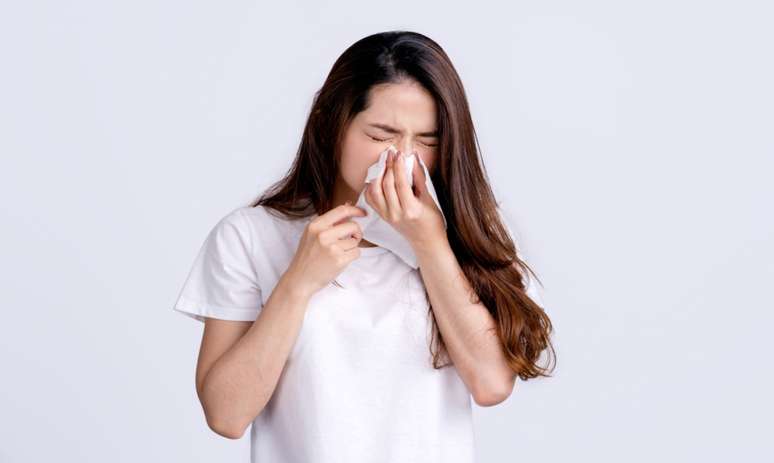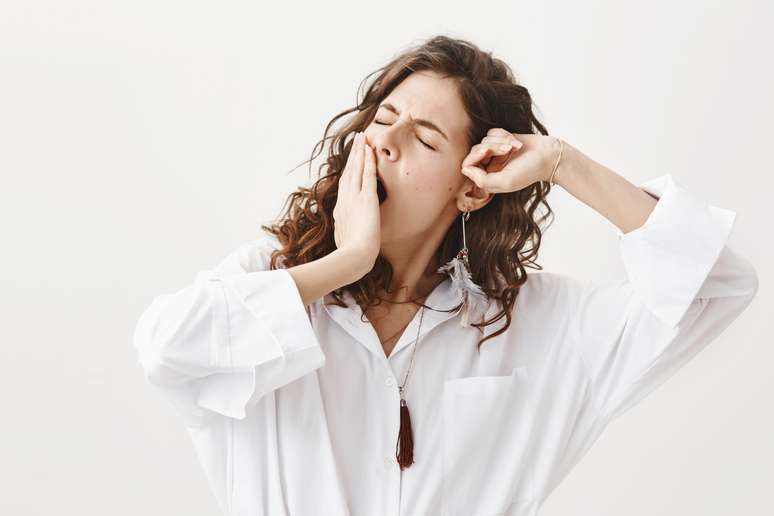Dust mite allergies aren’t just caused by sneezing. Find out other signs of the problem and how to fight it directly at the root
Those who frequently suffer from rhinitis attacks understand the problems that dust can cause to the respiratory tract. The symptoms of dust mite allergy, however, do not always manifest themselves in the nose.
Espaço Zune allergist and immunologist (HSPE-SP), Raissa Pimentel, explains that allergic rhinitis is the most common way symptoms manifest. Therefore, it is common for patients to experience sneezing, runny nose, nasal congestion, and itchy nose. However, dust mite allergy can also cause other types of disorders in the body.
Manifestations of allergy to dust mites
“It can also present itself as an allergy weapon, as exposure to dust mites will trigger asthma symptoms, which are those wheezing sounds known as wheezing, shortness of breath, dry cough attacks, and sometimes, it can also cause sense of tightness in the wrist and chest”, underlines the specialist.
Additionally, patients who already suffer from atopic dermatitis may experience a worsening of this condition. That is, a worsening of skin lesions, itching and itching. “Finally, it could be allergic conjunctivitis, since dust mite allergy can only manifest itself with ocular symptoms, such as watery eyes and itchy eyes,” adds the doctor.
Therefore, each person must react to dust mite allergy differently. Therefore, it is important to evaluate the intensity and also the combination of these comorbidities, emphasizes Raissa.
How to differentiate conditions
Allergies do not cause fever, the specialist emphasizes. Therefore, this is one way to differentiate allergy attacks from problems such as the flu or cold. “Remember that, in the case of colds and flu, the patient will present symptoms of body pain, general malaise, fever, things that allergies do not cause,” says the professional.
In the case of atopic dermatitis it is necessary to make a differential diagnosis with contact dermatitis, because sometimes they can present similar lesions. “Contact dermatitis occurs when we come into direct contact with the allergen or a specific irritant, triggering symptoms,” explains Raissa.
And, in the case of allergic conjunctivitis, you need to compare the condition to infectious conjunctivitis, which causes redness and tearing – which can also occur in allergic, bacterial, and viral conjunctivitis.
“However, generally in infectious conjunctivitis you will have an eye discharge, a yellowish or sometimes greenish discharge, thicker. In case of allergic conjunctivitis it is more tearful, it is really tears, the eye tears a lot. In infectious conjunctivitis there is already a thicker, greenish, yellowish secretion,” he explains.
To diagnose dust mite allergy, the ideal is to undergo a Request contact a specialist, in this case an allergist, to carry out specific tests, the “prick tests”, which are skin tests, or specific IgE. That is, blood tests that identify whether the patient is sensitive to the mite or not.
Treat the root of the problem
Raissa also reminds you that allergy treatment is a multifactorial treatment. Therefore, to treat dust mite allergy, you need to focus on both relieving symptoms and reducing exposure to dust mites, which is the root of the problem.
“We need to raise awareness among patients and there are also some strategies to make this treatment successful. Environmental control, which consists of reducing their exposure to dust mites, is the main and most important factor in minimizing symptoms. This is because it is necessary to identify what the patient is allergic to and keep him away from it, so we cut the root”, underlines the doctor.
In this sense, the allergist gives some recommendations:
- Place an anti-mite cover on the mattress and pillow;
- Change the mattress every five years and the pillow every two years;
- Wash bedding in hot water above 55 degrees, a measure used to kill dust mites;
- Avoid carpets and curtains inside the room;
- Always opt for light curtains that are washed more easily and more frequently;
- Always keep the environment cool, well ventilated and ventilated to reduce humidity, as this favors the growth of the mite;
- Regularly clean the room where the patient lives;
- Reduce items that accumulate dust, such as toys, teddy bears and books.
Drug treatment, in turn, helps control these symptoms. “The most common are antihistamines, which will bring immediate relief to symptoms such as sneezing, itchy nose, runny nose. We also use nasal corticosteroids, which will act on the inflammation, reducing nasal inflammation and therefore we can control this allergic rhinitis” , says the professional.
In some cases, a decongestant can be used. However, great caution is needed, for a short and always limited period of time. “We cannot use it for more than five days. If the patient has associated allergic asthma, we use an inhaled bronchodilator in case of asthma attacks,” adds Raissa.
In winter allergies can get worse
In the winter period there is an increase in symptomatic patients related to allergies. This is because, on cold days, we stay in more closed environments, which reduces ventilation, increasing the concentration of dust mites and also other allergens inside.
Furthermore, the use of heaters can be increased, which reduce the relative humidity of the air, creating an environment favorable to the proliferation of these mites: humid and warm places.
Regular cleaning is also less frequent in winter due to the cold, which will lead to a build-up of dust and mites that will proliferate in these indoor environments. “All these factors combined will result in increased exposure to dust mites and, as a result, you will have a greater frequency and greater severity of allergy symptoms during this period,” says the immunologist.
Finally, Raissa recommends regular follow-up with an allergist immunologist, which is essential both to diagnose this sensitization to mites and to monitor the effectiveness of the treatment, adjusting measures if necessary and ensuring a better quality of life for the patient.
Source: Terra
Ben Stock is a lifestyle journalist and author at Gossipify. He writes about topics such as health, wellness, travel, food and home decor. He provides practical advice and inspiration to improve well-being, keeps readers up to date with latest lifestyle news and trends, known for his engaging writing style, in-depth analysis and unique perspectives.









